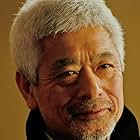John Rabe
- 2009
- 2h 14m
A true-story account of a German businessman who saved more than 200,000 Chinese during the Nanjing massacre in 1937-38.A true-story account of a German businessman who saved more than 200,000 Chinese during the Nanjing massacre in 1937-38.A true-story account of a German businessman who saved more than 200,000 Chinese during the Nanjing massacre in 1937-38.
- Awards
- 8 wins & 7 nominations total
- Major Ose
- (as Arata)
- Director
- Writers
- All cast & crew
- Production, box office & more at IMDbPro
Storyline
Did you know
- TriviaSeveral Japanese actors when approached immediately turned down any suggestion about appearing in the film. The Nanking massacre still touches a raw nerve in Japan today and for some Japanese actors the thought of appearing in a film about it was beyond comprehension.
- GoofsThe USS Panay is shown as a passenger ship when she was in fact a U.S. Navy River Gunboat. The movie shows the Panay being attacked within sight of Nanking (now known as Nanjing) but in reality it had moved 28 miles upriver and dropped anchor, along with three Standard Oil tankers. The attack lasted for 2.5 hours until the ship finally sunk. The attack left 3 sailors dead, 43 sailors and 5 civilians wounded.
- Quotes
Prince Asaka Yasuhiko: Congratulations, Major. You'll make an excellent commander one day. But I ask myself, why is it that I give orders not to take prisoners, and you arrive with thousands?
Major Ose: Please forgive me.
Japanese Officer: Your Highness.
Prince Asaka Yasuhiko: I didn't ask you to speak!
[Japanese officer steps back and bows]
Prince Asaka Yasuhiko: So, Major. What do you propose?
Major Ose: Your Highness. It would be extremely difficult to execute that many prisoners.
Prince Asaka Yasuhiko: Is that so?
Major Ose: Furthermore, I believe such executions could be considered to be illegal.
Prince Asaka Yasuhiko: Illegal? I am entrusting you personally with resolving this matter once and for all. I want no prisoner alive by tomorrow morning. We will also shell the city center. Nanking must experience the superiority of our troops.
- Alternate versionsGerman TV version features ca. 45 minutes of additional footage.
- SoundtracksDeutschlandlied
Written by Joseph Haydn
I am very familiar with the story of John Rabe and used to teach my world history students about him and the Japanese destruction of Nanking (I have since retired). Much of what I'd learned were from the book "The Rape of Nanking" as well as several well made documentaries. So, I am NOT the typical person watching the story for the first time--I am a bit tougher to please. Because of this, I am much more critical that average and to me, the story was flawed because it actually seemed very sanitized. In other words, while the film DID show some of the Japanese atrocities, it didn't do much--probably because it would nauseate most viewers. BUT, by doing so, it minimized the evil that was perpetrated here--making the Japanese troops seem almost normal. It's rare, but I would have included much more blood and talked much more about the rapes and murder of children. Evil must not be minimized and here it just didn't seem as sadistic and wrong as the Rape of Nanking was.
- planktonrules
- Jan 19, 2015
- Permalink
Details
- Release date
- Countries of origin
- Official sites
- Languages
- Also known as
- City of War: The Story of John Rabe
- Filming locations
- Production companies
- See more company credits at IMDbPro
Box office
- Budget
- $20,000,000 (estimated)
- Gross US & Canada
- $67,519
- Opening weekend US & Canada
- $4,892
- May 23, 2010
- Gross worldwide
- $1,484,665
- Runtime2 hours 14 minutes
- Color
- Sound mix
- Aspect ratio
- 2.35 : 1
Contribute to this page





























